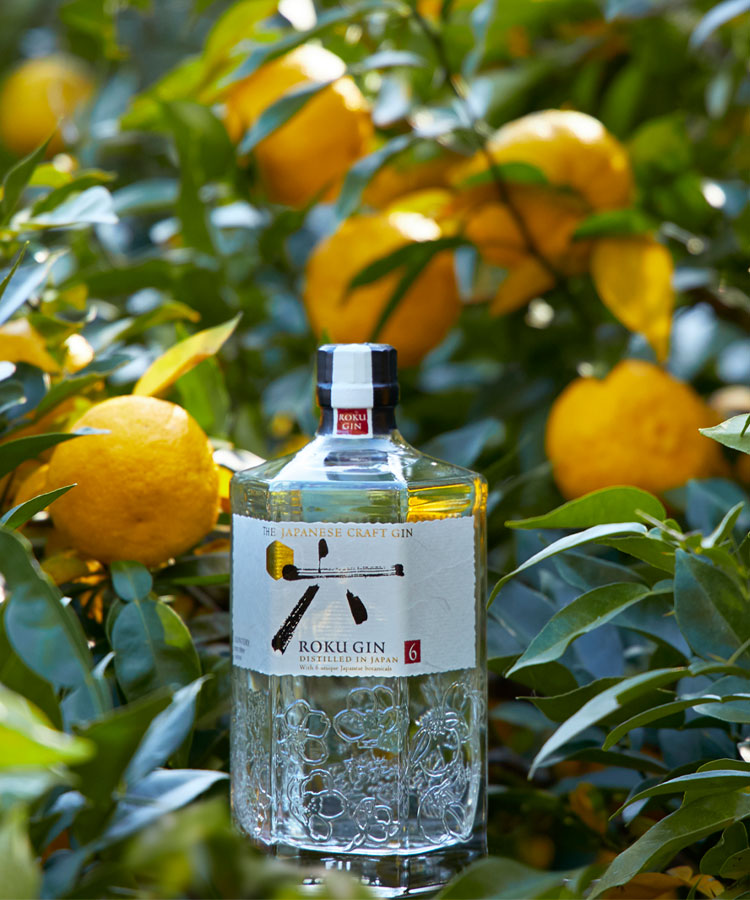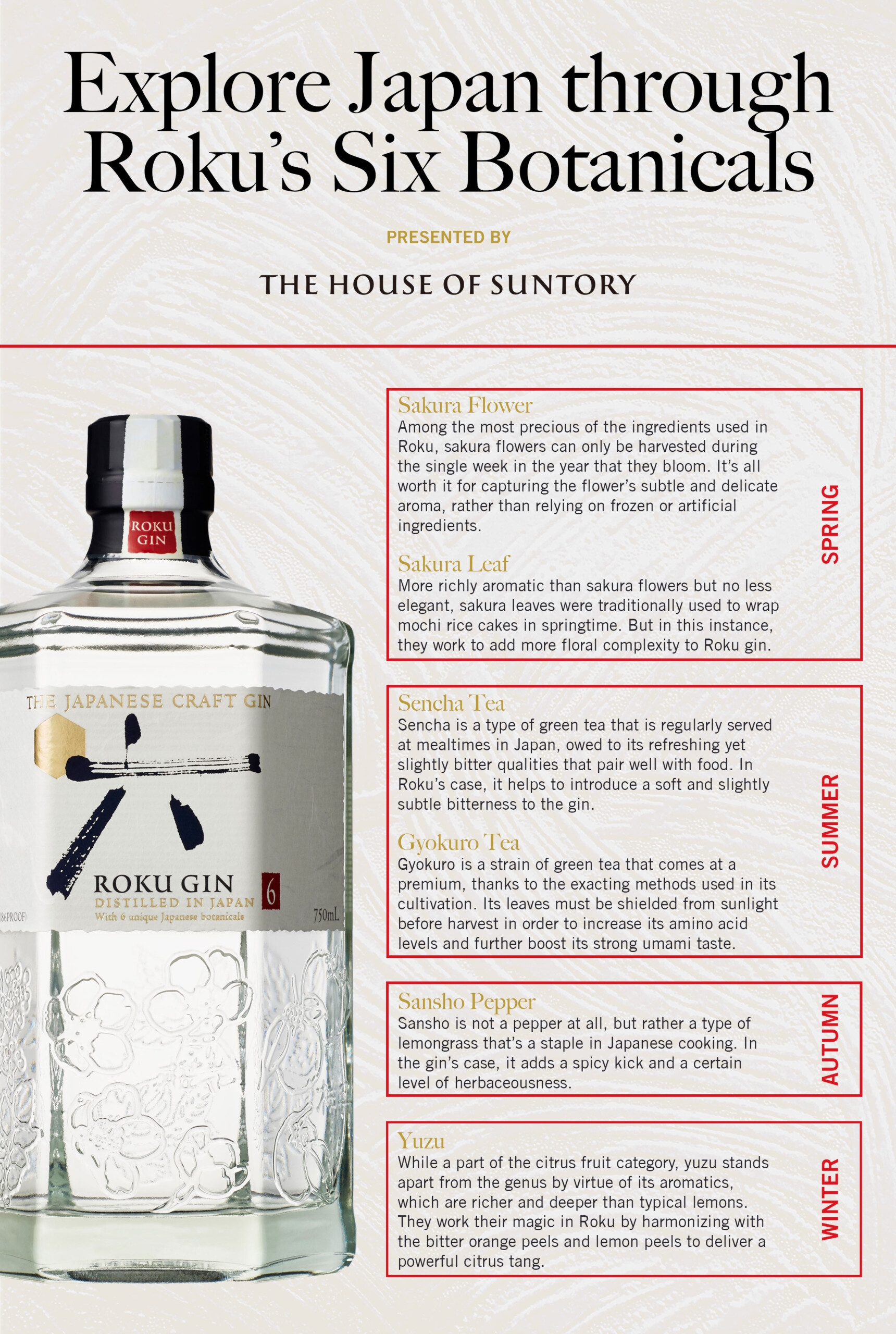
This article is part of a series, presented by House of Suntory. Discover more articles and recipes from the series here!
In these past few years, opportunities to visit Japan have been limited, to say the least. But there are ways of experiencing Japan’s unique culture and natural bounty without taking a plane to Narita Airport, and that brings us to Roku Gin.
Roku comes from the House of Suntory, which should require no introduction to anyone who’s ever enjoyed a Japanese whisky. However, few realize that Suntory has also made gin for almost its entire history and launched its first gin brand all the way back in 1936. Roku, introduced in 2017, is a fresh take on the category that utilizes two distinctly Japanese traits in its production: shun and monozukuri.
Shun (pronounced “shoon”) is a culinary ethos prescribing that food and drink should be enjoyed in their proper season, and only when the ingredients needed to create them have reached the peak of their flavors. In other words, it’s not too different from the concept of “seasonality” championed by your favorite New American restaurant (although Japan was doing this long before it was cool).
Monozukuri, on the other hand, combines the word mono, meaning “things and products,” and zukuri, which can be translated as the “process of making or creation.” While those terms may sound mundane alone, together they embody the uniquely Japanese drive for achieving excellence in a craft while continually striving to improve and innovate.
In regard to shun, Roku embodies the concept by utilizing six botanicals that are distinctly Japanese: beautifully aromatic sakura flowers and sakura leaves, slightly bitter sencha tea, umami-rich gyokuro tea, spicy sansho peppers, and the Japanese citrus fruit yuzu. In addition, each is harvested only at the point in the season when its freshness and taste have reached their apogee. That means spring for sakura flowers and sakura leaves, summer for sencha tea and gyokuro tea, autumn for sansho peppers, and winter for yuzu.
However, harvesting an ingredient at the heights of its powers means nothing unless the other ingredients and methods used to create the final product are not also sourced and performed with the utmost respect for craft. And that brings us to monozukuri, first in the excellence of the traditional, but non-Japanese-specific, botanicals that are also used to make the gin: coriander seed, angelica root, angelica seed, cinnamon, cinnamon seed, lemon peel, bitter orange peel, and juniper berries cultivated in Tuscany.
Furthermore, when it comes time to add the botanicals to the gin, each is prepared and treated differently to play to its specific strengths. In Roku’s case, four different distillation methods are used to extract the freshest flavors from the ingredients. For instance, a copper pot distillation with special parameters for yuzu helps to pull the rich, deep aroma and flavor from the winter citrus fruit, while a vacuum distillation set up specifically for sakura aids the extraction of the flower’s elegant aromas.
Roku’s dedication to shun and monozukuri are even displayed by its hexagonal bottle, whose six-sided shape calls back to the Japanese botanicals used in its creation. As a final salute to craft, its label is made from traditional washi paper and marked by Japanese calligraphy.
Now that you’ve been familiarized with Roku itself, we’ll call your attention to the seasonally sorted infographic below to provide greater insight into how those six Japanese botanicals contribute to its flavor.
This article is sponsored by The House of Suntory.
Roku® Gin, 43% Alc./Vol. ©2022 Beam Suntory Import Co., Chicago, IL

